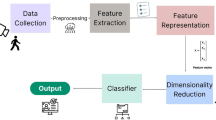The article continues our previous work [V. V. Savchenko and A. V. Savchenko, Izmeritel’naya Tekhnika, No. 12, 46–52 (2019)]. We study the problem of automatic control of the quality of voice samples recorded and stored in the Unified Biometric System. We propose a solution of the problem of timely updates of the collected samples required because their consumer qualities are lost in the course of time. A new indicator of the acoustic quality of voice samples in the Kullback–Leibler information metric is investigated and a new procedure is proposed for measuring this indicator at the times of contact of the users with the system with service requests. An example of practical implementation of the proposed method in the real-time mode is demonstrated. By using software specially developed by the authors, we performed a full-scale experiment and obtained quantitative estimates of the period of updating of voice samples. Some recommendations concerning their practical application are given. The accumulated results can be used for the purposes of development of new systems and technologies (and upgrading of the existing systems) of automatic quality control and adaptive renewal of the biometric personal data samples.




Similar content being viewed by others
References
M. Singh, R. Singh, and A. Ross, “A comprehensive overview of biometric fusion,” Inform. Fusion, 52, No. 12, 187–205 (2019), https://doi.org/10.1016/j.inffus.2018.12.003.
M. Nappi, S. Richardi, and M. Tissarelli, “Context awareness in biometric systems and methods: State of the art and future scenarios,” Image Vis. Comput., 76, No. 8, 27–37 (2018), https://doi.org/10.1016/j.imavis.2018.05.001.
F. Chowdhury, S. A. Selouani, and D. O’Shaughnessy, “Voice biometrics: Speaker verification and identification,” in: Signal and Image Processing for Biometrics, Wiley, New York (2013), pp. 131–148, https://doi.org/10.1002/9781118561911.ch7.
M. Smallman, “Why voice is getting stronger in financial services,” Biometric Technol. Today, 2017, No. 1, 5–7 (2017), https://doi.org/10.1016/S0969-4765(17)30013-9.
V. V. Savchenko and A. V. Savchenko, “Method for measuring the indicator of acoustic quality of audio recordings prepared for registration and processing in the Unified Biometric System,” Izmer. Tekhn., No. 12, 46–52 (2019), https://doi.org/10.32446/0368-1025it.2019-12-40-46.
H. B. Kekre and V. A. Bharadi, “Aging adaptation for multimodal biometrics using adaptive feature set update algorithm,” in: 2009 IEEE Int. Advance Computing Conf., Patiala, India. Pub. IEEE (2009), pp. 535–540, https://doi.org/10.1109/IADCC.2009.4809068.
S. M. Anzar, K. Amala, R. Rajendran, et al., “Efficient online and offline sample update mechanisms for speaker recognition,” Comput. Electron. Eng., 50, No. 2, 10–25 (2016), https://doi.org/10.1016/j.compeleceng.2015.12.003.
Y. Matveev, “The problem of voice sample aging in speaker recognition systems,” in: Lect. Notes in Comp. Sci., Springer, Berlin (2013), Vol. 8113, pp. 345–353, https://doi.org/10.1007/978-3-319-01931-4_46.
A. Sholokhov, T. Kinnunen, V. Vestman, and K. A. Lee, “Voice biometrics security: Extrapolating false alarm rate via hierarchical Bayesian modeling of speaker verification scores,” Comp. Speech & Lang., 59, No. 10, 101–110 (2019), 1016/j.csl.2019.101024.
J. Hansen and H. Bořil, “On the issues of intraspeaker variability and realism in speech, speaker, and language recognition tasks,” Speech Communic., 101, No. 5, 94–108 (2018), https://doi.org/10.1016/j.specom.2018.05.004.
Sh. Heald, S. Klos, and H. Nusbaum, “Understanding speech in the context of variability,” in: Neurobiology of Language, Academic Press, New York (2015), pp. 195–208, https://doi.org/10.1016/B978-0-12-407794-2.00017-1.
V. Ya. Chuchupal, “An implicit model of the pronunciation variability for the automatic speech recognition,” Mash. Obuch. Analiz Dann., 2, No. 4, 370–377 (2016), https://doi.org/10.21469/22233792.2.4.01.
M. Yukari and N. Masami, International Business Machines Corp., Patent US 8 775178 B2, Int. Cl.7 G10L 15/063, “Updating a voice sample,” No. 2008-275807, Oct. 27, 2008, No. US 2010/01065O1 A1, Apr. 29, 2010, publ. Apr. 9, 2013.
V. V. Savchenko, Radiophys. Quant. Electr., 58, No. 5, 373–379 (2015), https://doi.org/10.1007/s11141-015-9611-4.
Minutes of Full-Scale Tests, https://sites.google.com/site/frompldcreators/protocol_3-1.pdf, acc. 11.02.2019.
S. Kullback, Information Theory and Statistics, Dover, New York (1997), https://www.amazon.com/Information-Theory-Statistics-Dover-Mathematics/dp/0486696847.
V. V. Savchenko and L. V. Savchenko, “Method for measuring the intelligibility of speech signals in the Kullback–Leibler information metric,” Izmer. Tekhn., No. 9, 59–64 (2019), https://doi.org/10.32446/0368-1025it.2019-9-59-64.
V. V. Savchenko, J. Comm. Technol. Electronics, 64, No. 6, 590–596 (2019), https://doi.org/10.1134/S1064226919060093.
V. V. Savchenko, “A method of measuring the index of acoustic voice quality based on an information-theoretic approach.” Izmer. Tekhn., No. 1, 60–64 (2018), https://doi.org/10.32446/0368-1025it.2018-1-60-64.
Software-Hardware Complex Phoneme Training, https://sites.google.com/site/frompldcreators/produkty-1/phonemetraining,acc. 11.02.2019.
V. V. Savchenko and A. V. Savchenko, J. Comm. Technol. Electron., 61, No. 4, 430–435 (2016), https://doi.org/10.1134/S1064226916040112.
P. H. Muller, P. Neumann, and R. Storm, Tafeln der Mathematischen Statistik, VEB, Leipzig (1973), https://doi.org/10.1002/bimj.19740160816.
V. V. Savchenko and A. V. Savchenko, Radioelectron. Comm. Syst., 62, No. 5, 276–286 (2019), https://doi.org/10.3103/S0735272719050042.
J. Benesty, J. Chen, Y. Huang, “Linear prediction,” in: Springer Handbook of Speech Processing. Pt. B, J. Benesty et al. (eds), Springer, N.Y. (2008), pp. 111–121, https://doi.org/10.1007/978-3-540-49127-9_7.
Author information
Authors and Affiliations
Corresponding author
Additional information
Translated from Izmeritel’naya Tekhnika, No. 5, pp. 58–65, May, 2020.
Rights and permissions
About this article
Cite this article
Savchenko, V.V., Savchenko, A.V. A Method for the Real-Time Updating of Voice Samples in the Unified Biometric System. Meas Tech 63, 391–400 (2020). https://doi.org/10.1007/s11018-020-01800-5
Received:
Accepted:
Published:
Issue Date:
DOI: https://doi.org/10.1007/s11018-020-01800-5




